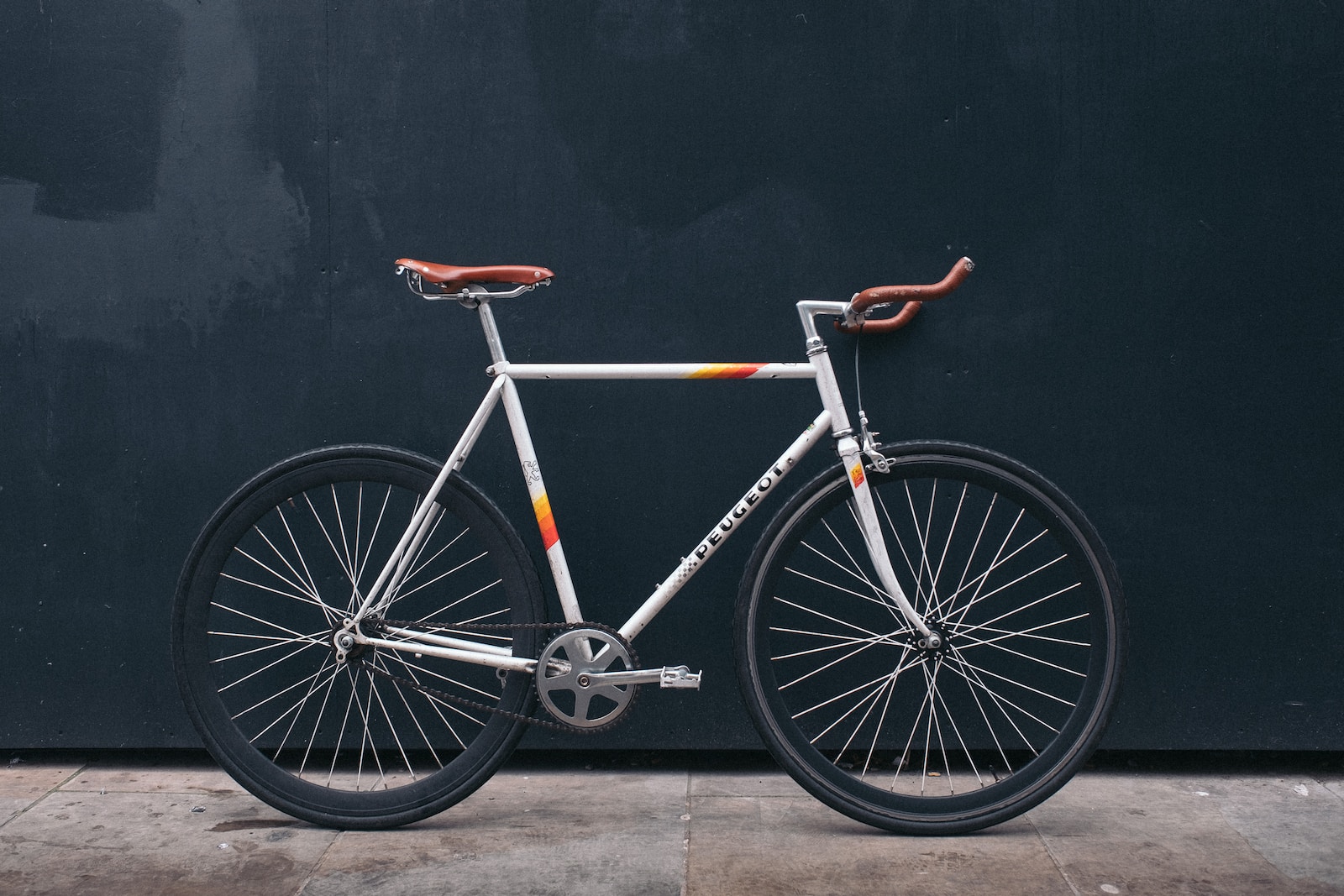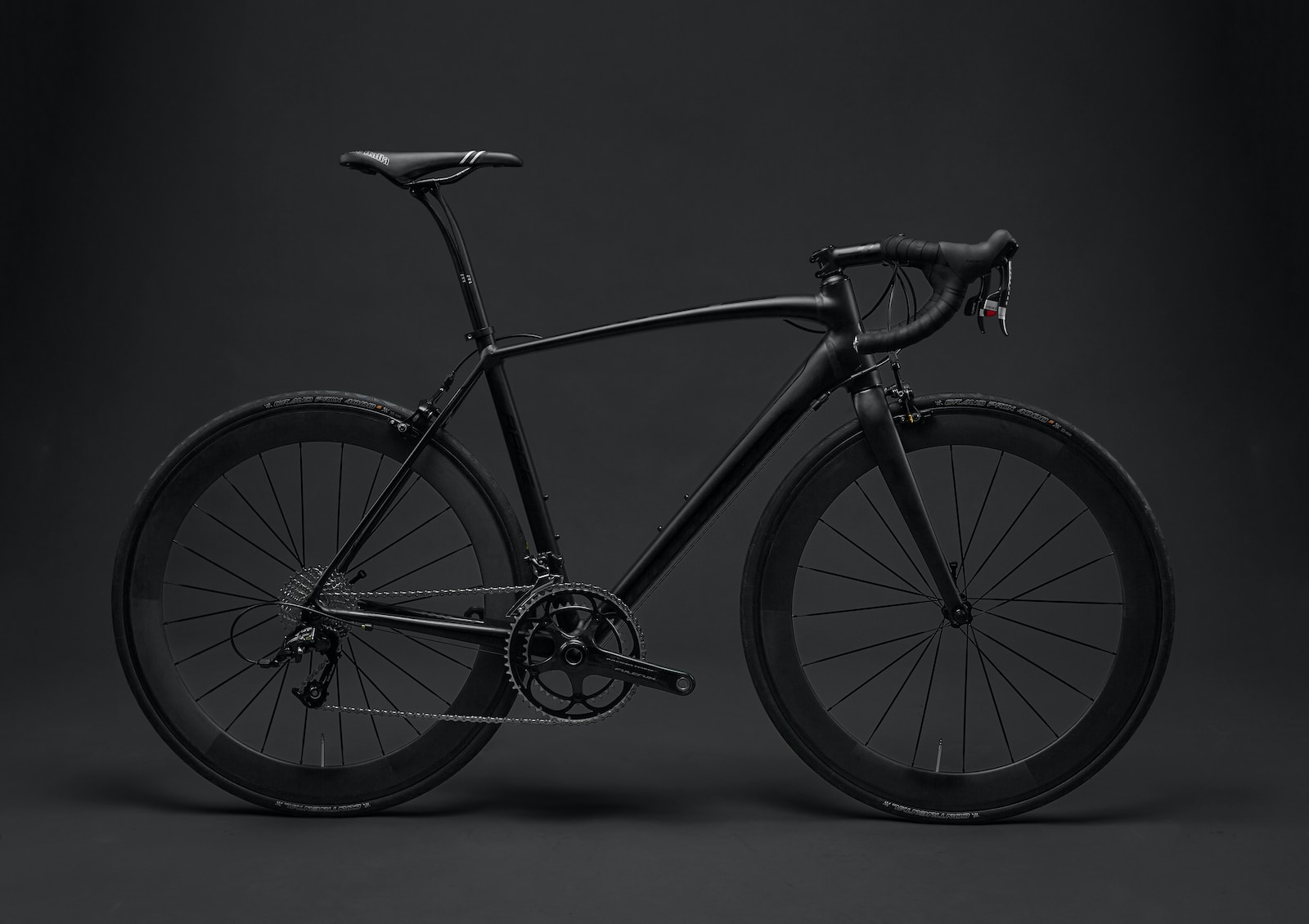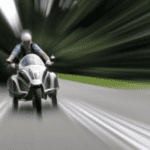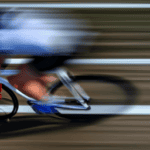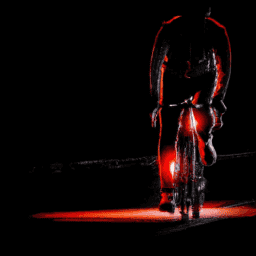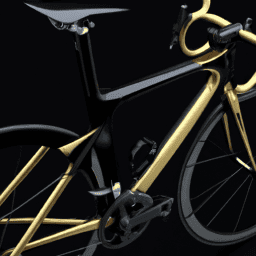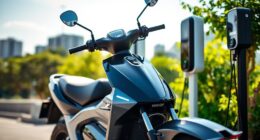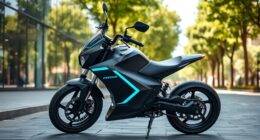As an experienced cyclist, I have always been intrigued by the speed and power that can be reached on a bicycle. I frequently ponder how fast a bicycle is capable of going and what influences play a role in pushing the boundaries of speed.
In this article, I’ll be breaking down the science behind bicycle speed, discussing average speeds for different types of cyclists, and exploring techniques for increasing your speed on the bike.
When it comes to the speed of a bicycle, there are numerous factors that can affect how fast you can go. From the weight of the bike to the power output of the rider, each variable plays a crucial role in determining just how fast you can ride.
As someone who has spent countless hours analyzing the mechanics of cycling, I’m excited to share my knowledge and insights on the topic in this article. So, whether you’re a seasoned cyclist looking to improve your speed or just a curious beginner, read on to learn more about the fascinating world of bicycle speed.
Key Takeaways
- Factors affecting bicycle speed include weather, terrain, and tire type.
- Average speeds vary greatly depending on skill level, from 8-12 mph for beginners to 22-25+ mph for professionals.
- Techniques for increasing speed include improving aerodynamics, efficient pedaling, investing in aerodynamic equipment, and proper body position.
- Land speed records require immense dedication, preparation, and constant innovation to break.
Factors That Affect Bicycle Speed
So, you’re probably wondering what factors can affect how fast your bike can go, right? Well, let’s dive into it!
One of the most significant factors that can impact your bicycle speed is the weather. Strong wind resistance can slow you down, and rain can cause your tires to lose traction, making it harder to pedal.
The terrain you’re biking on also plays a big role. Going uphill requires more energy and can slow you down, while downhill can give you a speed boost. Additionally, rough terrain can cause your tires to lose traction and decrease your speed.
Another factor that can affect your speed is the type of tires you have. Different types of tires have varying levels of rolling resistance, which directly affects your speed. Road bike tires are designed to have low rolling resistance and are best for smooth surfaces like pavement, while mountain bike tires have higher rolling resistance but are better suited for rough terrain. Hybrid tires are a good compromise between the two. So, depending on the type of terrain you’ll be biking on, choosing the right tires can make a big difference in your speed.
Now that we’ve discussed the factors that can affect your bicycle speed, it’s time to move on to the next topic – average speeds for different types of cyclists.
Average Speeds for Different Types of Cyclists
Cyclists of varying skill levels can achieve different average speeds while riding. Factors that can affect a cyclist’s speed include their training methods, nutrition, and the type of bicycle they are using. Here is a table that showcases the average speeds for different types of cyclists based on their skill level:
| Skill Level | Average Speed (mph) |
|---|---|
| Beginner | 8-12 |
| Intermediate | 13-16 |
| Advanced | 17-21 |
| Professional | 22-25+ |
As you can see, a professional cyclist can achieve an average speed of 22-25+ mph, while a beginner cyclist averages between 8-12 mph. This demonstrates the importance of proper training methods and nutrition in order to increase one’s speed on a bicycle.
In order to achieve higher speeds, there are various techniques that can be implemented such as improving aerodynamics, increasing strength and endurance through training, and optimizing nutrition intake. By utilizing these techniques, cyclists can continue to push their limits and increase their average speeds.
Techniques for Increasing Bicycle Speed
As a cycling enthusiast, I’ve found that there are several techniques that can be used to increase speed on a bicycle.
First, proper body position is essential for reducing wind resistance and increasing aerodynamics.
Second, efficient pedaling involves making sure that each pedal stroke is as powerful as possible.
Finally, investing in aerodynamic equipment such as aero wheels or a streamlined helmet can make a significant difference in overall speed.
By mastering these techniques, cyclists can improve their performance and achieve faster speeds on the road.
Proper Body Position
To achieve maximum speed on a bicycle, you’ll want to make sure your body position is aerodynamic and efficient. This means keeping your upper body low and your arms and legs close to your body. By keeping your head down and your back flat, you can reduce wind resistance and increase your speed.
It’s also important to keep your shoulders relaxed and your elbows slightly bent, which will help you absorb shocks and maintain control. Before getting on your bike, make sure you’ve properly stretched your muscles and are well-hydrated. This will help you maintain the proper body position and avoid cramping or discomfort during your ride.
By staying hydrated, you’ll also be able to maintain your energy levels and avoid fatigue, which can lead to poor body position and decreased speed. With the right body position and preparation, you can achieve maximum speed on your bicycle and enjoy a smooth, efficient ride.
To maintain your speed, you’ll also need to focus on efficient pedaling. This means using your legs in a smooth, circular motion and avoiding sudden movements or jerks. By keeping your cadence steady and using the right gear, you can maintain a consistent speed without wasting energy or putting undue stress on your body.
In the next section, we’ll explore some tips for efficient pedaling that will help you maintain your speed and enjoy a comfortable ride.
Efficient Pedaling
Achieving maximum speed on your bike requires efficient pedaling – are you using a smooth, circular motion with the right gear?
A proper pedal stroke is essential to get the most out of your bike. It’s crucial to apply constant pressure throughout the entire pedal stroke to maintain a steady and efficient pace. To achieve this, you must have a smooth and circular motion, avoiding any sudden jerks or pauses.
Another important aspect of efficient pedaling is cadence variations. Your cadence is the number of revolutions per minute (RPM) that your pedals make. Finding the right cadence for your body and the terrain you are riding on can make all the difference. Generally, a cadence between 80-100 RPM is optimal for most riders. However, you should experiment with different cadences to find the one that works best for you.
Efficient pedaling is just one piece of the puzzle when it comes to achieving maximum speed on your bike. The next step is to consider aerodynamic equipment, such as helmets and clothing, to reduce wind resistance and further improve your speed.
Aerodynamic Equipment
When you’re trying to become more aerodynamic on your bike, you’ll want to consider investing in equipment that’s designed to minimize wind resistance and help you glide through the air with ease. There are several types of aerodynamic equipment for bicycles that can help you achieve this, including aerodynamic helmets, wheels, frames, and handlebars.
These pieces of equipment are designed to reduce drag and improve your overall speed. The impact of wind resistance on speed cannot be overstated. Even a small amount of added resistance can significantly decrease your speed and make it more difficult to pedal. By investing in aerodynamic equipment, you can reduce wind resistance and increase your speed, allowing you to ride faster and more efficiently.
With this knowledge in mind, let’s take a look at some of the record-breaking bicycle speeds achieved by riders who have mastered the art of aerodynamics.
Record-Breaking Bicycle Speeds
When I think about the fastest a bicycle can go, my mind immediately turns to world records. The Land Speed Record for a bicycle is currently 183.9 mph, set in 2020 by a British cyclist.
This is a stunning feat of engineering, and it’s fascinating to consider the level of dedication and preparation required to reach such incredible speeds.
Similarly, the World Cycling Records for distance and speed are constantly being pushed higher and higher, as athletes strive to push the limits of what is possible on a bicycle.
Land Speed Records
You know you’re in for a wild ride when cyclists have broken land speed records reaching speeds over 180 mph. The challenges faced in breaking these records are immense. The slightest mistake could lead to disastrous consequences. The history of land speed records is one of constant innovation and pushing the limits of what is possible.
To give you an idea of just how fast these cyclists are going, imagine driving down a highway at 180 mph. Now imagine doing that on a bicycle. It’s hard to fathom, but that’s exactly what these athletes are doing. To put it in perspective, here’s a table comparing the speed of a land speed record holder to common modes of transportation:
| Record Holder | Speed (mph) | Comparable to |
|---|---|---|
| Denise Mueller-Korenek | 183.93 | Top speed of a commercial airplane on takeoff |
| Fred Rompelberg | 167.04 | Speed of a Formula One car |
| Sam Whittingham | 82.82 | Speed of a cheetah running at full speed |
| Barbara Buatois | 75.69 | Speed of a sprinting ostrich |
As you can see, these cyclists are reaching speeds that are simply mind-boggling. But breaking land speed records is just one aspect of cycling. In the next section, we’ll explore the world cycling records and the incredible feats of athleticism that they entail.
World Cycling Records
If you’re interested in cycling, exploring the world cycling records will reveal some truly impressive feats of athleticism that have been achieved.
The current world record for the fastest bicycle speed was set by Denise Mueller-Korenek in 2018, when she reached a speed of 183.93 mph (296.01 km/h) on a specially designed bike and with the help of a dragster vehicle.
This record was achieved on a dried out lake bed in Bonneville Salt Flats, Utah, USA, a location known for its extreme weather conditions and salt crust surface that provides a smooth riding experience.
But extreme weather conditions are not the only factor that can affect cycling speed. Altitude is another important factor that can impact cycling speed.
Higher altitudes have lower air pressure, which means less air resistance and thus potentially higher speeds. However, at high altitudes, the amount of oxygen available for the body decreases, which can lead to a decrease in performance.
Therefore, cyclists have to balance the benefits of lower air resistance with the challenges of reduced oxygen levels when cycling at high altitudes.
When cycling at high speeds, safety considerations become crucial.
Safety Considerations When Cycling at High Speeds
Cycling at high speeds can be exhilarating, but it’s important to keep in mind the safety considerations that come along with it. As someone who’s experienced the thrill of cycling at high speeds, I know firsthand the importance of being prepared and taking necessary precautions. Here are some safety considerations to keep in mind:
-
Importance of brakes: When cycling at high speeds, having reliable braking system’s crucial. Make sure your brakes’re well-maintained and in good working condition before embarking on any high-speed ride.
-
Protective gear: Wearing the right protective gear’s essential when cycling at high speeds. A helmet’s a must, but you should also consider wearing protective eyewear, gloves, and appropriate clothing to protect your body in case of a fall.
-
Proper bike fit: Ensuring your bike’s properly fitted to your body can make a big difference in your safety while cycling at high speeds. A poorly fitting bike can cause discomfort, instability, and even accidents.
-
Road conditions: Be aware of the road conditions and terrain you’ll be cycling on. Uneven or slippery surfaces can make it difficult to maintain control of your bike at high speeds.
-
Traffic and pedestrians: When cycling at high speeds, it’s important to keep an eye out for other cyclists, pedestrians, and vehicles on the road. Always stay alert and maintain a safe distance from other road users.
By keeping these safety considerations in mind, you can enjoy the thrill of cycling at high speeds while minimizing the risk of accidents or injuries. Remember, safety always comes first.
Frequently Asked Questions
What is the maximum speed a bicycle can reach?
As a cycling enthusiast, I’ve researched the maximum speeds possible for bicycles. Factors such as terrain, wind resistance, and rider ability greatly affect speed. Record-breaking achievements, like the hour record, showcase the incredible potential for human-powered speed.
How long does it take to achieve a high cycling speed?
To achieve high cycling speeds, interval training techniques and proper nutrition are essential. It can take several weeks to months of consistent training to increase speed. Factors such as terrain and weather also affect speed.
What is the most efficient type of bike for achieving high speeds?
As a cycling enthusiast, I know that the most efficient bike for high speeds depends on the rider’s goals. For speed alone, aerodynamics reigns supreme, but power output matters on hills. Additionally, terrain greatly impacts overall speed.
Are there any legal limits on cycling speed?
Speed limits and safety regulations vary by location and are typically enforced by local law enforcement. It is important for cyclists to be aware of these limitations and to prioritize safety while riding.
What physical training is required to increase cycling speed?
Oh boy, if you want to increase your cycling speed, be ready to sweat! Interval training is a key technique, alternating hard efforts with rest periods. And don’t forget to tackle those hills! Hill climbing builds strength and endurance.
Conclusion
In conclusion, the speed at which a bicycle can travel is influenced by various factors such as the rider’s physical ability, terrain, wind, and equipment. Cyclists can expect to achieve different average speeds depending on their level of experience, fitness, and type of cycling.
However, there are techniques that can increase a rider’s speed, such as training, using aerodynamic equipment, and maintaining proper form. Record-breaking bicycle speeds are a testament to the remarkable capabilities of human beings and the evolution of technology.
Nevertheless, it’s essential to prioritize safety when cycling at high speeds. As the saying goes, "better safe than sorry."Therefore, cyclists should always wear a helmet, follow traffic rules, and be aware of their surroundings.
Overall, cycling is an excellent way to stay active, explore the outdoors, and challenge oneself. So, let’s put the pedal to the metal and ride on!
